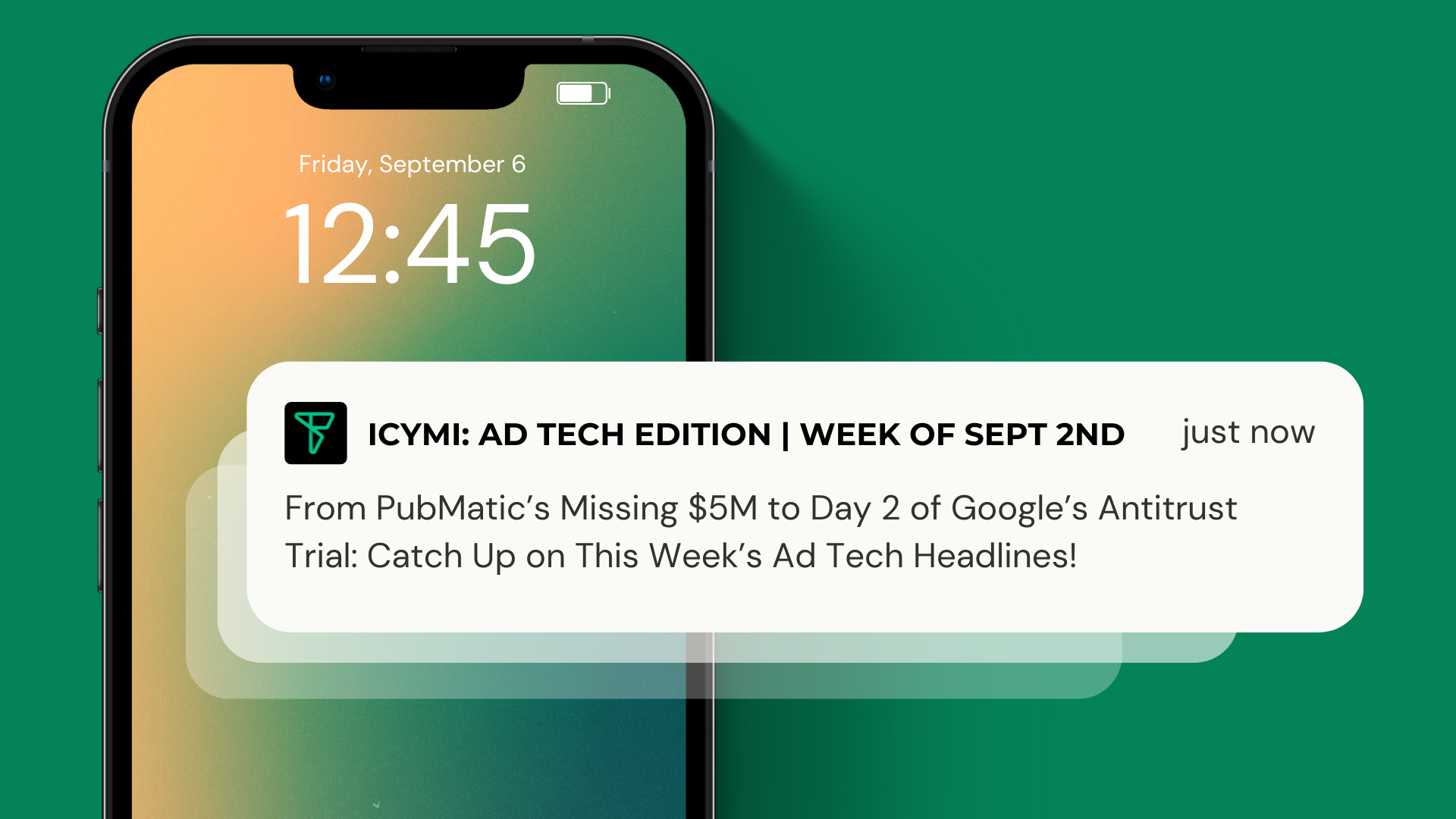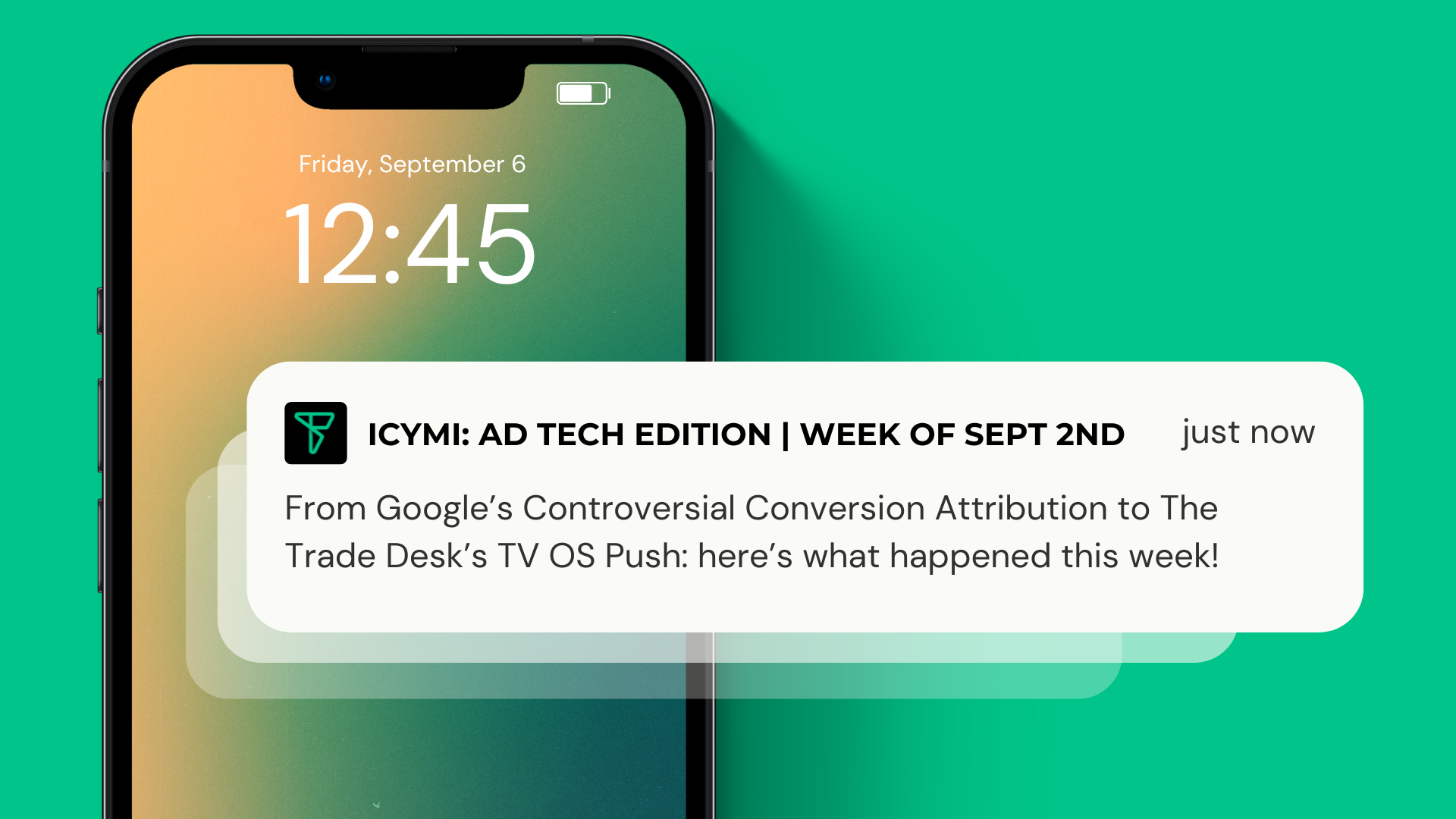Bits and Bobs from around the industry:
- IAB: US Digital Ad Revenues Top $200 Billion For The First Time In 2022 | Adexchanger
- SSPs break with the past as push comes to shove in ad tech | Digiday
- Meta Regains Some of its Mojo for Marketers Thanks to AI Tool Advantage+ | Adweek
- A Google Ads script that uses GPT to write RSAs | Search Engine Land
- How Publishers Use SPO to Cut Carbon Emissions, With an Eye on Growing Revenue | Adweek
IAB: US Digital Ad Revenues Top $200 Billion For The First Time In 2022 | Adexchanger
The Interactive Advertising Bureau (IAB) reported that US digital advertising revenues surpassed $200 billion in 2022 for the first time, representing a 21.8% increase from the previous year. Mobile advertising saw the largest growth, accounting for 68% of the total digital advertising revenue. Social media advertising also saw significant growth, with a 40% increase from the previous year. Video advertising, including connected TV, saw a 19% increase from 2020. The report also found that ad-supported digital audio platforms saw a 30% increase in revenue. Overall, the IAB predicts continued growth in digital advertising revenues as consumers continue to shift their media consumption habits towards digital channels.
SSPs break with the past as push comes to shove in ad tech | Digiday
The article discusses how supply-side platforms (SSPs) are changing their approach in response to industry-wide shifts in ad tech. Rather than relying solely on programmatic advertising, SSPs are seeking new revenue streams through avenues such as contextual advertising and private marketplaces. Some SSPs are also partnering with demand-side platforms (DSPs) to offer a more unified platform for buyers and sellers. This shift is partly due to increased competition and consolidation in the industry, as well as changing consumer privacy regulations. SSPs are adapting their strategies to better serve the needs of both advertisers and publishers, and to remain competitive in an evolving ad tech landscape.
Meta Regains Some of its Mojo for Marketers Thanks to AI Tool Advantage+ | Adweek
AI tools offered by Meta (formerly Facebook) are regaining the attention of marketers. The social media platform’s AI-powered tools have improved ad targeting, helping marketers more effectively reach their desired audiences. Additionally, Meta’s AI tools have enhanced ad creation, allowing for more personalized and dynamic ad content. Meta is also working to improve its measurement and attribution capabilities, providing more insights into the effectiveness of campaigns. The article notes that Meta’s AI tools are particularly useful for small and medium-sized businesses, as they provide a cost-effective way to improve ad performance. Overall, the article suggests that Meta’s focus on AI tools could help it regain its status as a top platform for marketers.
A Google Ads script that uses GPT to write RSAs | Search Engine Land
Google Ads Scripts can now be used to automate the creation and testing of responsive search ads using the GPT-3 language model. Responsive search ads are a type of ad format that allows advertisers to input multiple headlines and descriptions, which Google’s algorithm then combines and tests to determine the most effective ad combinations. By using GPT-3, Google Ads Scripts can generate a large number of headline and description variations, which can then be automatically tested to determine the most effective combinations. This approach allows advertisers to quickly iterate and improve their ad performance without manual input. The article notes that while GPT-3 is a powerful tool for generating ad content, it is important to ensure that the resulting ads are still relevant and appropriate for the target audience.
How Publishers Use SPO to Cut Carbon Emissions, With an Eye on Growing Revenue | Adweek
Publishers are using Supply Path Optimization (SPO) to reduce carbon emissions and increase revenue. SPO involves streamlining the process of buying and selling digital ads, which reduces waste and cuts down on carbon emissions. By using SPO, publishers can work with fewer partners who have a strong track record of reducing waste, which ultimately leads to increased revenue. The article also notes that the use of SPO is becoming more common in the digital advertising industry and is expected to continue growing in the coming years.





